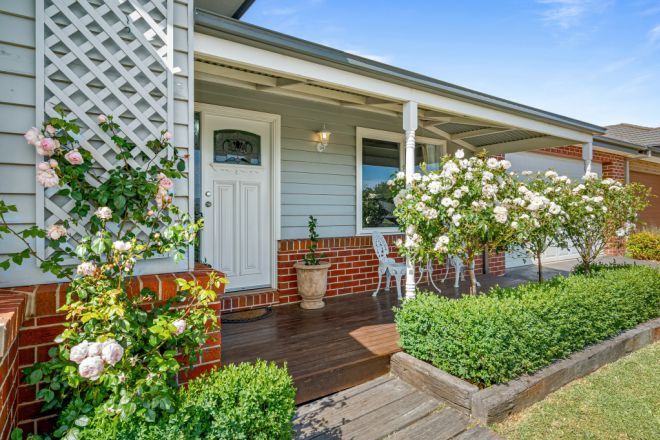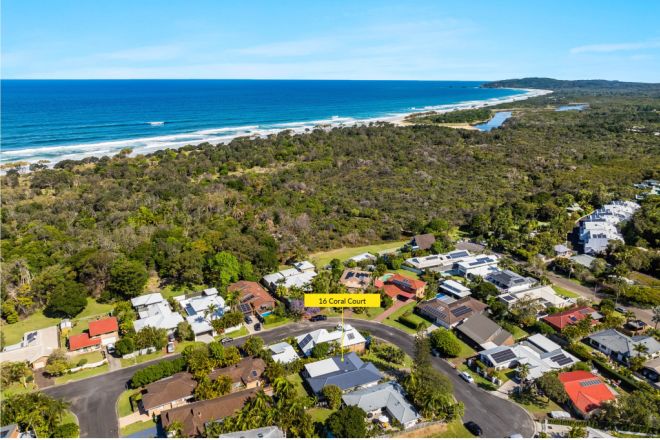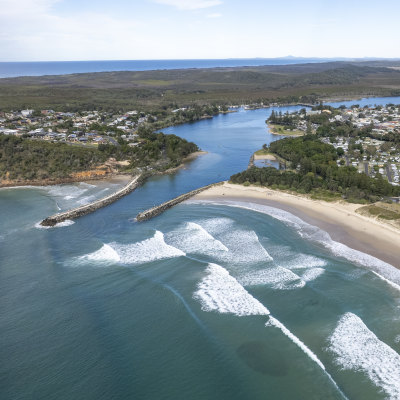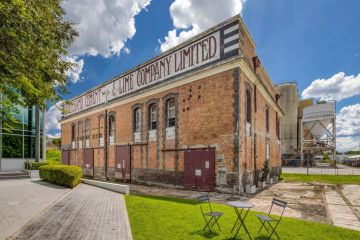Sea-change and tree-change towns with deepest property price discounts
Home sellers in a string of popular sea- and tree-change towns are discounting pandemic boom-time price expectations to get a deal done, new data reveals.
Buyers can expect to pay about 4 to 6 per cent less than the original listing price as fewer city dwellers move to the regions and homes listed for sale pile up.
Byron Bay tops the list in NSW with a median discount of 6.7 per cent in the year to October, according to the latest CoreLogic Regional Market Update. It is followed by Kempsey and Ulladulla, which both had a median discount of 5.8 per cent in the same period.
In Victoria, Gisborne had the highest median discount of 5.8 per cent in the same period, followed by Portland, which had a median discount of 5.5 per cent.
It comes as most of these areas recorded a notable increase in homes listed for sale and their days on market blowout.
CoreLogic Australia economist and report author Kaytlin Ezzy said vendor discounting pointed to a market in favour of buyers.
“It means there’s more supply. That means there’s more choice out there for buyers,” Ezzy said.
“They don’t have to compete with other buyers for that property, and instead it’s the vendor who is competing for that buyer and therefore has to be willing to negotiate.”
She said most of these towns have stronger discounting than during lockdowns due to fewer buyers in regional areas.
“Generally not as many people are moving to the regions. So as homes are listed they’re not being as easily absorbed by the market,” Ezzy said.

“That means stock has been able to accumulate and puts downward pressure on values and vendors have to compete more and be negotiable.
“Byron Bay has about 17 per cent more listings in October than what we usually see this time of year and Gisborne is about 45 per cent above what we usually see.”
KPMG regional economist Terry Rawnsley said not only were there fewer buyers, but those remaining had reduced purchasing power, which was putting downward pressure on prices.
“Byron Bay is probably a good case study. During COVID lockdowns, people shifted to Byron – they were happy to pay a premium to secure a property,” Rawnsley said.
“Then in the last two years, the return to the office and higher interest rates have hampered buyers. It’s reduced the pool of people looking to move to a regional location. Vendors have to offer a bit of a discount to meet the market.”
He said many of the Victorian regional towns at lower price points were discounting because they were first home buyers’ markets, feeling the pinch from higher interest rates the most.
“[Gisborne’s] probably a dual market. It’s acreage living in that part of the world and there’s also people searching for affordable housing. It’s got both ends of that market feeling the pinch,” Rawnsley said.
Ray White Byron Bay’s Damien Smith said sellers in his region had unrealistic boom-time expectations of the lockdown years.

“If anyone bought in the past three years, they’re trying to get that ‘let’s get our money back’ price rather than market price,” Smith said. “They’ve all got in their head what they’ve paid for it, and it’s a lot more than what it’s worth.”
“There are fewer buyers. If you’re borrowing money, especially entry-level, it’s a lot of money.
“The ratio [of capital city and local buyers] is still similar, but the volume is not there. The buyer pool has thinned out. It’s definitely reduced.”
Connect Real Estate’s Helen Sankey said it was very much a buyer’s market in the Gisborne area.
“We’re the first regional town out of metropolitan Melbourne. So post-COVID obviously that demand backed off, and then it was exacerbated by the increase in interest rates,” Sankey said. “It’s very much a buyer’s market and since April 2022, it’s had a huge adjustment.”
Sankey said there were more homes than buyers, which was hurting sellers with strong expectations.
“If it’s priced right, the houses will move quickly. If it is deemed high, then it sits on the market – the days on market is extended out,” she said.
She said while there was not a lot of distressed selling among owner occupiers, it was investors who were most affected by the weaker conditions in the market.
“But investors, with the increase in land tax, are the people who are most distressed. The disparity between rental income and mortgage repayments plus the increased land tax there is no cream off the top left.”
We recommend
We thought you might like
States
Capital Cities
Capital Cities - Rentals
Popular Areas
Allhomes
More










